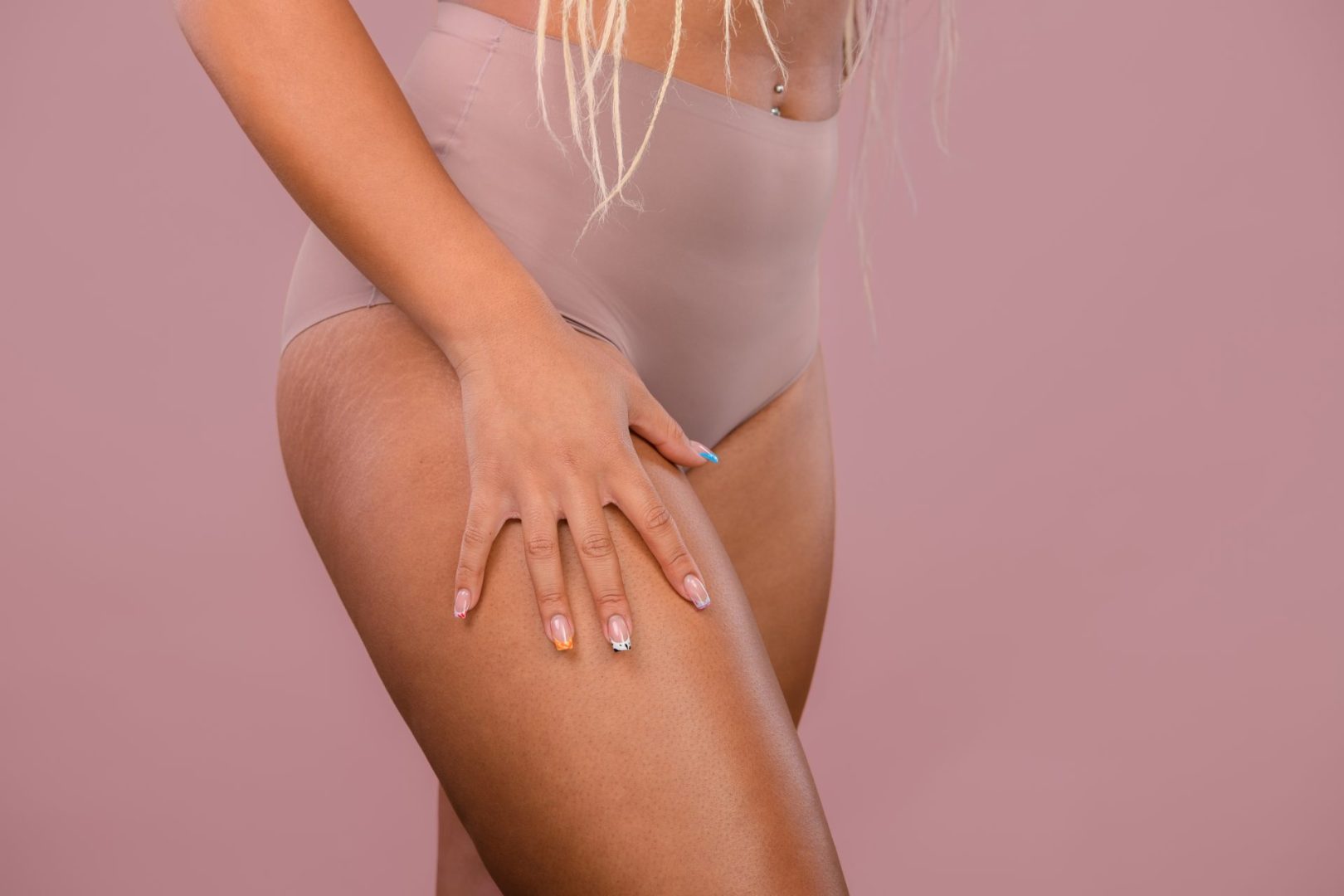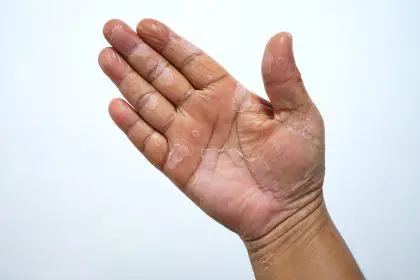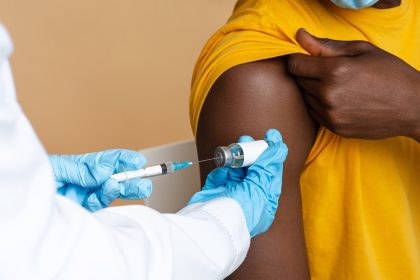Polycystic ovary syndrome affects millions of women worldwide, yet many remain unaware they have this complex hormonal condition. While PCOS primarily impacts reproductive health, its effects extend far beyond the ovaries, creating visible changes across the skin that serve as important early warning signs.
The skin acts as a mirror for internal hormonal fluctuations, making it one of the most reliable indicators of PCOS. Understanding these dermatological manifestations can help women recognize the condition sooner and seek appropriate medical care before complications develop.
1. Persistent adult acne in specific patterns
Adult acne represents one of the most common skin manifestations of PCOS, affecting up to 70% of women with the condition. Unlike typical teenage breakouts that often appear across the entire face, PCOS-related acne follows distinct patterns that set it apart from other forms of skin inflammation.
This hormonal acne typically concentrates along the jawline, chin, and lower cheeks, creating what dermatologists call the “hormonal acne zone.” The breakouts tend to be deeper, more cystic, and significantly more persistent than regular acne. These lesions often feel tender to the touch and can take weeks to heal completely.
The underlying cause stems from elevated androgen levels, particularly testosterone, which stimulate sebaceous glands to produce excess oil. This overproduction of sebum combines with dead skin cells to clog pores, creating an environment where acne-causing bacteria thrive.
Women with PCOS often notice their acne worsens around menstrual cycles, though the irregular periods common with this condition can make timing difficult to predict. The acne may also prove resistant to typical over-the-counter treatments that work for other types of breakouts.
2. Excessive hair growth in unexpected places
Hirsutism, or excessive hair growth in areas where women typically have minimal hair, affects approximately 60% of women with PCOS. This condition results from elevated androgen levels that trigger hair follicles to produce coarser, darker hair in male-pattern distribution areas.
The most noticeable hair growth typically appears on the face, particularly around the chin, upper lip, and sideburn areas. Many women also experience increased hair growth on their chest, back, abdomen, and inner thighs. The hair tends to be darker and coarser than the fine vellus hair normally found in these areas.
This excessive hair growth often begins gradually during puberty but can worsen over time if left untreated. Some women notice the hair becoming progressively thicker and more numerous, requiring frequent removal methods that can lead to skin irritation and ingrown hairs.
The psychological impact of hirsutism can be significant, affecting self-esteem and quality of life. Many women spend considerable time and money on hair removal methods, from shaving and plucking to laser treatments and electrolysis.
3. Dark patches that won’t wash away
Acanthosis nigricans appears as dark, velvety patches of skin that commonly develop in body fold areas among women with PCOS. These distinctive skin changes occur in up to 35% of women with the condition and serve as visible markers of insulin resistance, a key component of PCOS.
The dark patches typically appear in areas where skin rubs against skin, including the neck, armpits, groin, and under the breasts. The affected skin feels thicker and softer than surrounding areas, with a characteristic velvety texture that distinguishes it from other skin discolorations.
Many women initially mistake these patches for poor hygiene or inadequate washing, leading to excessive scrubbing that can worsen the appearance and cause irritation. The discoloration cannot be removed through cleansing, as it results from increased skin cell production triggered by insulin resistance.
The severity of acanthosis nigricans often correlates with the degree of insulin resistance present. As insulin levels remain elevated, skin cells multiply more rapidly in these friction-prone areas, creating the characteristic thickened, darkened appearance.
4. Unexpected hair loss patterns
While some areas experience excessive hair growth, women with PCOS may simultaneously notice hair thinning or loss in other regions, particularly on the scalp. This male-pattern baldness, known as androgenetic alopecia, affects up to 40% of women with PCOS.
The hair loss typically begins with widening of the center part, followed by thinning at the crown and temples. Unlike typical female pattern hair loss that maintains the frontal hairline, PCOS-related hair loss can create a receding hairline similar to male baldness patterns.
Women often notice their ponytails becoming thinner or that more hair collects in their brush or shower drain. The remaining hair may also become finer and more fragile, breaking more easily during styling or brushing.
This hair loss results from the same elevated androgen levels that cause excessive hair growth elsewhere on the body. The scalp hair follicles become sensitive to dihydrotestosterone (DHT), a hormone derivative that causes follicles to shrink and eventually stop producing hair.
5. Small skin growths in friction areas
Skin tags, medically known as acrochordons, appear more frequently in women with PCOS compared to the general population. These small, soft, flesh-colored growths typically develop in areas where skin experiences friction, such as the neck, armpits, eyelids, and groin.
The connection between PCOS and skin tags relates to insulin resistance, which affects skin cell growth and regeneration. Elevated insulin levels can stimulate excessive skin cell production, leading to these benign but noticeable growths.
Skin tags associated with PCOS tend to appear in multiples rather than as isolated growths. They may start small but can gradually increase in size over time, sometimes becoming irritated by clothing or jewelry rubbing against them.
While skin tags are harmless, their presence in young women, particularly when multiple tags appear simultaneously, can indicate underlying hormonal imbalances worth investigating. The tags may become more numerous and prominent if insulin resistance worsens over time.
Understanding the bigger picture
These skin manifestations rarely occur in isolation among women with PCOS. Most experience combinations of these symptoms, creating a recognizable pattern that healthcare providers can identify during physical examinations. The severity and combination of skin symptoms often reflect the underlying hormonal imbalances present.
Early recognition of these skin signs enables women to seek medical evaluation before PCOS progresses to more serious complications. Left untreated, PCOS can lead to diabetes, cardiovascular disease, and endometrial cancer, making early detection and management crucial for long-term health.
The skin symptoms of PCOS often improve with appropriate treatment targeting the underlying hormonal imbalances. Hormonal birth control, anti-androgen medications, and insulin-sensitizing drugs can help reduce acne, slow excessive hair growth, and prevent further skin changes.
Lifestyle modifications including weight management, regular exercise, and dietary changes can also positively impact these skin manifestations by improving insulin sensitivity and reducing androgen levels naturally.
Recognition of these skin signs empowers women to advocate for their health and seek appropriate medical care. Understanding that these symptoms connect to a treatable medical condition rather than simple cosmetic concerns can provide relief and motivation for pursuing proper diagnosis and treatment.














